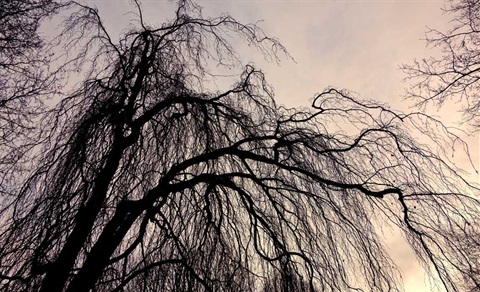Willows

We are all familiar with the romantic English notion of drooping willow branches overhanging a chattering creek. But in Australia, willows are a different story. They are not just a weed – they can transform entire waterways.
Willows spread their roots throughout creekbeds, reducing natural turbulence, eddies and deep pools. The result is less oxygen and habitat for fish and invertebrates. The dense root mass they create lines creeks. This makes it hard for platypus to forage for food and create burrows. Such a solid root mass also reduces organic layers in the creek bed. This is an important habitat for native invertebrates - just like the leaf litter in your garden.
Willows also compete for light and root space, pushing out native vegetation. Yet they provide little to no tree habitat such as tree hollows. When willows drop leaves in autumn, oxygen is sucked out of the water in the process of breaking down millions of leaves. This harms aquatic plants, fish and invertebrates and can result in fish kills. Unsurprisingly, willows are a declared weed in Tasmania, as well as a Weed of National Significance.
The most common species of willow in the Hobart area is crack willow (Salix fragilis). This can drop entire branches without warning, and spread rapidly along creeks by dropping live twigs that easily take root. The thickets created by crack willows cause flooding and bank erosion.
You can find more information about willows on the Department of Natural Resources and Environment website.
Treating willows
One good method is to pull out live (green) willow twigs on creek banks, especially after heavy rainfall. Willow twigs can go in FOGO bins, or left somewhere secure to dry out for a few months.
Felling willows
A willow can be drilled with herbicide and left to die standing, which is ideal because any twigs dropped are not green. This is only possible if there are no walking tracks or structures underneath that could be damaged by falling branches. Otherwise the tree has to be felled live, dropping thousands of twigs that could take root.
Willow removal ideally starts with upstream plants, before working down the catchment to avoid re-introduction when the twigs drop. Willow removal is usually coupled with replanting of replacement native vegetation to stabilise banks.